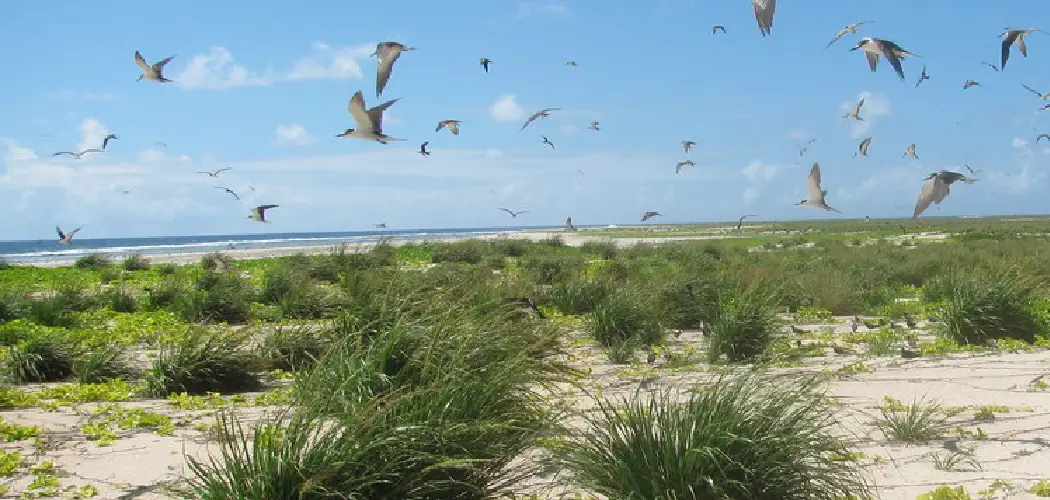Do you want a stunning and vibrant green lawn? If so, it is essential to protect grass seed from birds properly. Not only can these intelligent animals destroy your hard-earned efforts in an instant by intentionally consuming the seeds, but they may even unknowingly disrupt your plans due to continuous foraging activities.
Fortunately, there are many ways to effectively deter birds from devouring newly planted grass seeds! In this blog post, we will discuss simple strategies that you can implement to safeguard your valuable investment of time and money while helping make sure that your beautiful lawn can take root and flourish. So, keep reading about how to protect grass seed from birds.
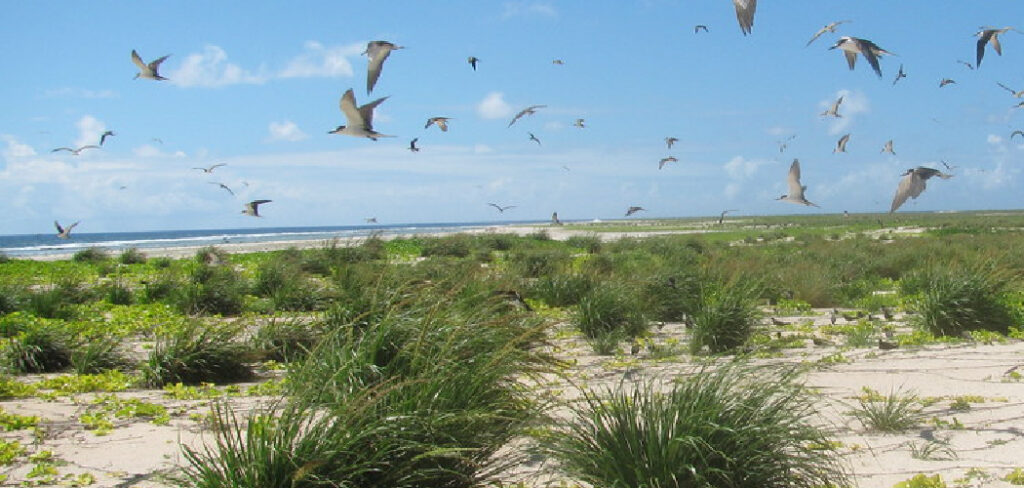
Necessary Items
Before diving into the strategies for protecting grass seed from birds, let’s review the required items. These include materials that will help you implement your chosen strategy effectively. Some of these items might already be available in your home, while others may need to be purchased:
- Garden netting or bird netting
- Scarecrows or other bird-repelling visual deterrents
- Bird spikes or bird wire
- Natural repellents such as chili powder, vinegar, or cayenne pepper
- Ultrasonic bird deterrents
10 Steps on How to Protect Grass Seed From Birds
1. Use Garden Netting
Garden or bird netting is a simple and effective way to provide a physical barrier between birds and your grass seed. This netting is usually made of a soft, fine mesh that allows air and sunlight to pass through, preventing birds from accessing the seeds underneath.
You can easily drape it over your newly planted area or attach it to stakes for a more secure installation. Make sure to pull the netting tight so that there are no gaps where birds can sneak in.
2. Install Scarecrows or Other Visual Deterrents
Scarecrows and other bird-repelling visual deterrents such as fake owls, hawk kites, or shiny reflective tape are excellent ways to scare off birds from your yard. These items create the illusion that predators are present, making birds think twice before landing on your lawn. Just remember to move these deterrents around every few days to avoid birds getting used to them.
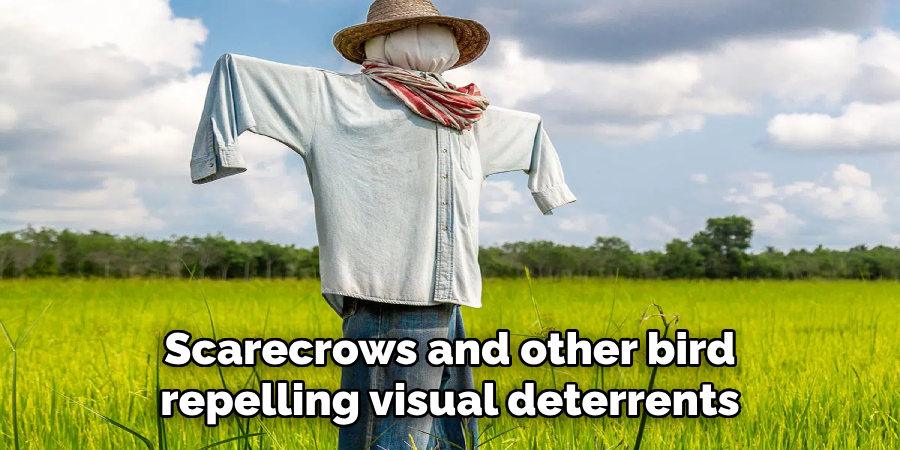
3. Consider Bird Spikes or Bird Wire
Bird spikes or bird wire can be an effective solution for larger birds such as pigeons and crows. These physical barriers are usually placed on ledges, railings, or roofs, preventing birds from landing and accessing the grass seed. They are harmless to birds but can effectively deter them from your lawn.
4. Try Natural Repellents
If you prefer more natural methods, try a few options. Sprinkling chili powder or cayenne pepper around your newly planted area can irritate birds’ feet and discourage them from foraging.
You can also mix vinegar with water and spray the solution around your lawn to create an unpleasant scent for birds. However, remember that these methods may need to be reapplied after rain or watering.
5. Use Ultrasonic Bird Deterrents
Ultrasonic bird deterrents emit high-frequency sound waves that are undetectable by humans but annoying for birds. These devices can be placed near your lawn and help keep birds away without causing any harm to them.
6. Plant Grass Seed Strategically
If you have a large yard, consider planting your grass seed in sections instead of all at once. This way, if birds find their way to one area, the rest of your lawn will still have a chance to grow undisturbed. You can also try planting a different type of grass seed that birds do not typically eat.
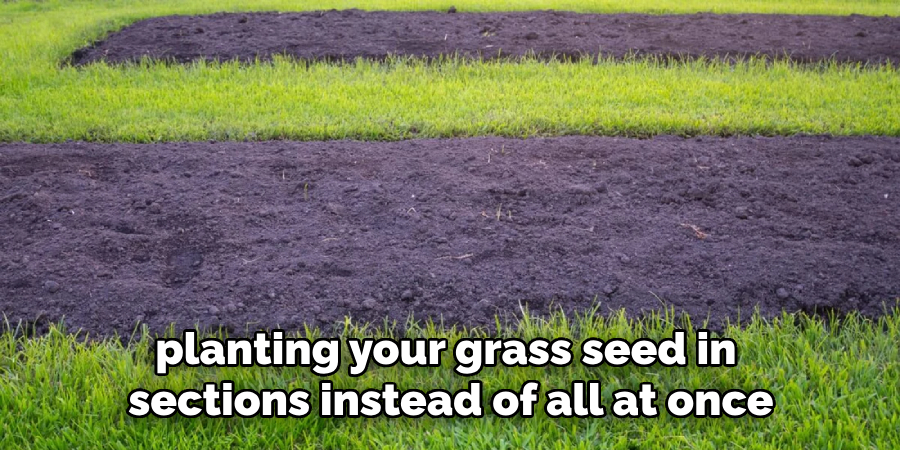
7. Keep Your Lawn Moist
Dry and loose soil makes it easier for birds to access and consume the seeds underneath. To prevent this, water your lawn regularly and keep the top layer of soil moist until the grass seed germinates and establishes strong roots.
8. Remove Attractive Food Sources
Birds are attracted to food sources such as bird feeders, garbage cans, and outdoor pet food bowls. To prevent them from being drawn to your lawn, ensure these items are not easily accessible or keep them away from where you have planted grass seed.
9. Be Patient
It can take several weeks for grass seed to germinate and grow into a lush lawn. During this time, it is normal for birds to visit your yard as they search for food sources. So, be patient and trust that your chosen method of deterring birds will eventually work.
10. Don’t Give Up!
Lastly, if one method is not working, don’t give up! Birds are intelligent creatures and may adapt to certain deterrents over time. It is best to try a combination of strategies or switch things up until you find what works best for your situation.
Protecting grass seed from birds requires effort and patience, but it is well worth it. Using the strategies mentioned in this blog post, you can safeguard your lawn and promote healthy growth. Remember to be persistent, and feel free to try different methods until you find what works best for you. With some planning and the right tools, your stunning green lawn will soon be a reality!
8 Care Tips for Your Grass Seedlings
In addition to protecting your grass seedlings from frost, there are other steps you can take to ensure their healthy growth. Here are eight care tips for your new grass seedlings:
1. Water Regularly
Ensure the soil stays moist but not saturated by watering every day or every other day. This will help the roots establish themselves and encourage healthy growth.
2. Don’t Cut Too Soon
Avoid mowing your new grass until it has reached a height of at least 3 inches. This allows the root system to become stronger and better withstand trimming.
3. Fertilize Properly
Wait until your new grass seedlings have been established for at least six weeks before fertilizing. Use a slow-release fertilizer to prevent burning the young plants.
4. Aerate the Soil
Aerating your lawn can promote better drainage and allow air, water, and nutrients to reach the roots of your new grass seedlings.
5. Keep Weeds at Bay
Weeds can compete with your new grass seedlings for nutrients and water. Keep them in check by pulling them out or using a weed killer.
6. Adjust Watering Schedule
As your new grass seedlings grow, their water needs will change. Adjust your watering schedule to ensure they get the right amount of moisture.
7. Be Mindful of Foot Traffic
Avoid walking on your new grass seedlings as much as possible to prevent damage to the delicate blades. Consider setting up temporary pathways or stepping stones until the lawn is fully established.
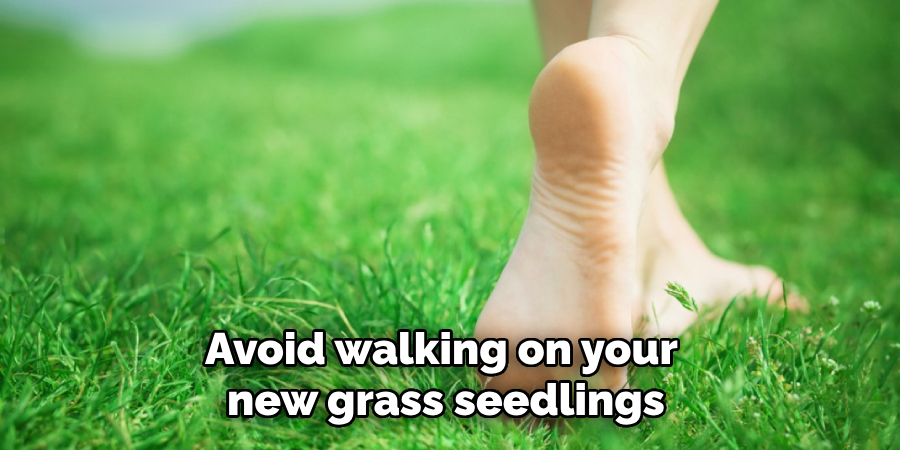
8. Patience is Key
It takes time for a beautiful, lush lawn to grow. Be patient and give your new grass seedlings the time and care they need to thrive. You’ll soon have a healthy and vibrant lawn with proper maintenance.
So, don’t be discouraged if it takes a few weeks longer than expected – the result will be worth it. Remember to water regularly, avoid cutting too soon, fertilize properly, and be patient. With these tips, you can grow a beautiful, healthy lawn from seed. Happy gardening! So, if you plan to grow grass seedlings in your yard, use these care tips and the bird deterrent strategies mentioned earlier to ensure the best chance of success.
Frequently Asked Questions
How Can I Keep Weeds from Taking Over My New Lawn?
Weeds can compete with your new grass seedlings for nutrients and water, so keeping them in check is important. Pull them out manually or use a weed killer if necessary. Maintaining a thick and healthy lawn is also helpful, as healthy grass can outcompete weeds for resources. Overall, regular maintenance and proper care will help keep weeds at bay.
How Soon Can I Mow My New Lawn?
You should wait until your new grass has reached a height of at least 3 inches before mowing. This allows the root system to become stronger and better withstand trimming. However, if the grass gets too long, you can lightly trim the top without cutting it too short – aim for about 2 inches in length.
Is It Necessary to Fertilize My New Lawn?
Fertilizing is not necessary for the immediate growth of your new grass seedlings, but it can benefit their long-term health and development. However, waiting at least six weeks before fertilizing is important to avoid burning the young plants.
Use a slow-release fertilizer for best results. Overall, proper watering and maintenance will greatly contribute to the success of your new lawn without the immediate need for fertilizers. However, using a high-quality fertilizer can promote healthy growth and long-term lawn maintenance.
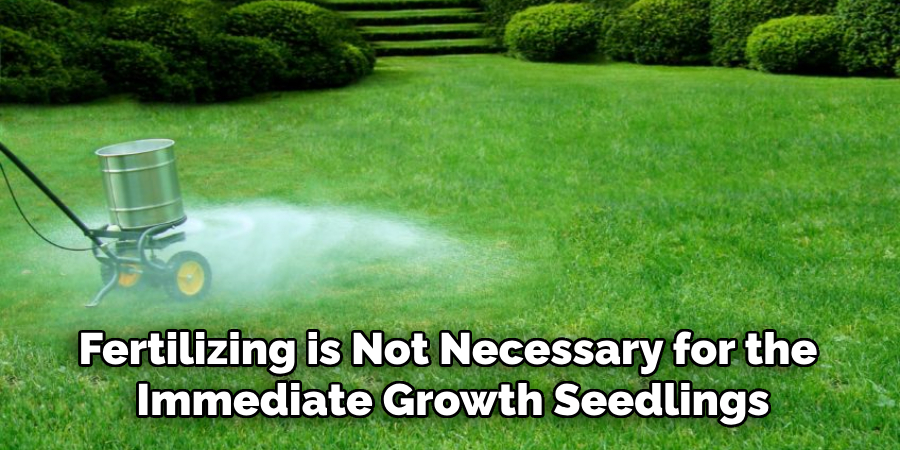
Conclusion
Growing grass seedlings can be a rewarding and satisfying experience. With proper care and protection from threats like frost and birds, your lawn will soon become the envy of the neighborhood.
By taking proper care of your new grass, you will have a beautiful lawn and contribute to a healthier ecosystem. So, follow these tips on how to protect grass seed from birds and enjoy the fruits of your labor in a lush green yard for years to come!
Remember that each lawn is unique, so finding what works best for you may take trial and error. Feel free to try different methods or ask for advice from a professional. With patience and persistence, you will have a healthy and vibrant lawn in no time.
So, whether starting from scratch or patching up some bare spots in your lawn, follow these tips for successful grass seed growth and maintenance. And remember, a little bit of effort now will pay off with a beautiful and thriving lawn that you can enjoy for years to come.
About
Outdoor Fixes is a distinguished figure in the world of Diy design, with a decade of expertise creating innovative and sustainable Diy solutions.
His professional focus lies in merging traditional craftsmanship with modern manufacturing techniques,
fostering designs that are both practical and environmentally conscious. As the author of diy,
outdoorfixes delves into the art and science of outdoorfixes-making, inspiring artisans and industry professionals alike.
Education RMIT University
(Melbourne, Australia) Associate Degree in Design (Outdoor Fixes) Focus on sustainable design, industry-driven projects,
and practical craftsmanship. Gained hands-on experience with traditional and digital manufacturing tools, such as CAD and CNC software.
Nottingham Trent University
(United Kingdom) Bachelor’s in outdoorfixes.com and Product Design (Honors) Specialized in product design with a focus on blending creativity with production
techniques. Participated in industry projects, working with companies like John Lewis and Vitsoe to gain real-world insights.
Publications and Impact
In diy, Outdoor Fixes his insights on indoor design processes, materials, and strategies for efficient production.
His writing bridges the gap between artisan knowledge and modern industry needs, making it a must-read for both budding designers and seasoned professionals.

